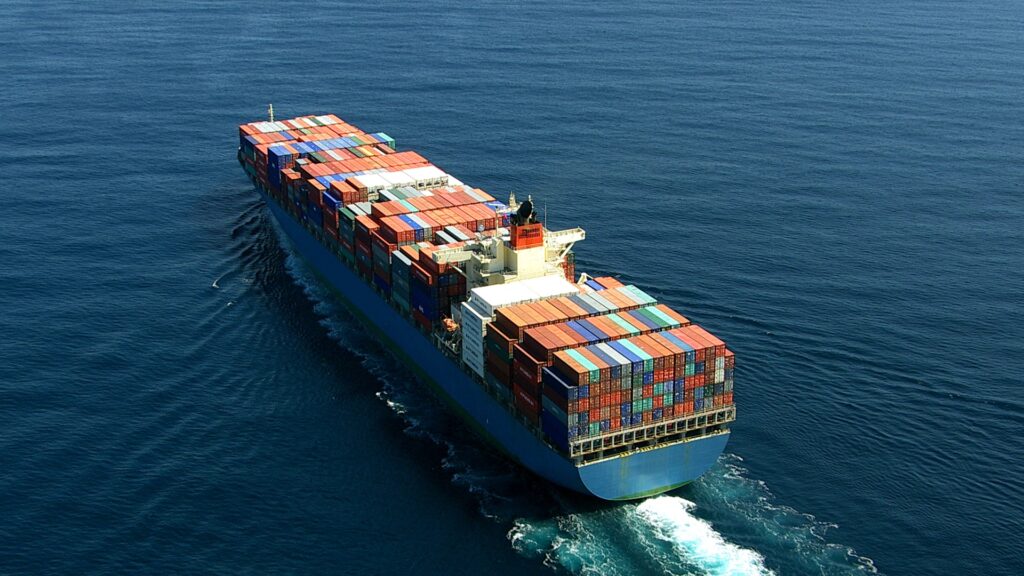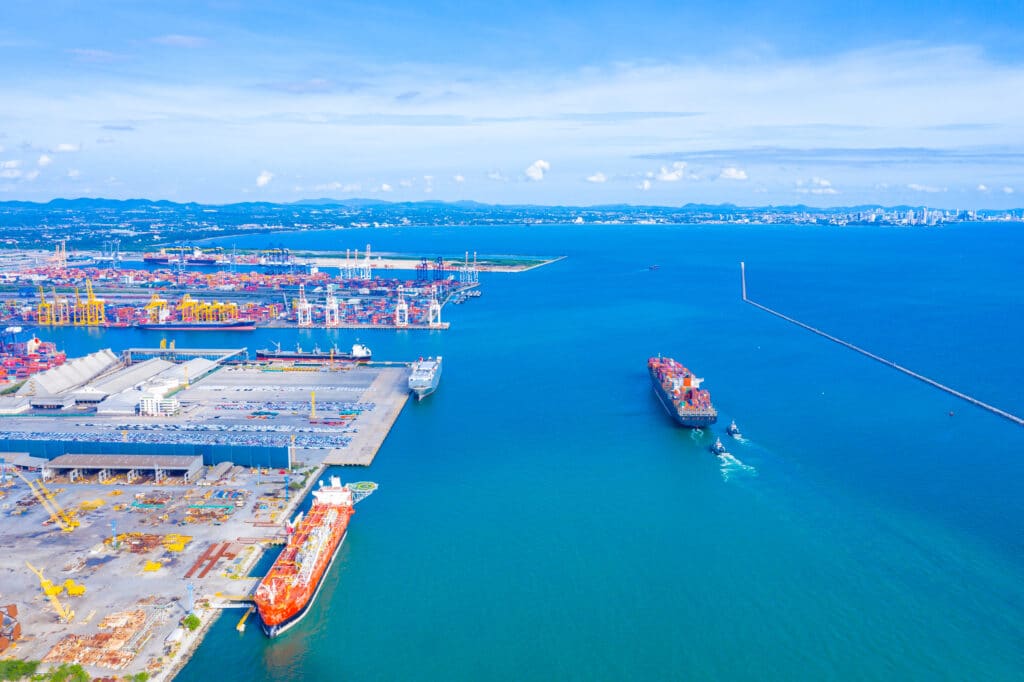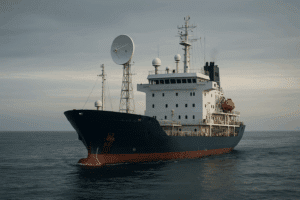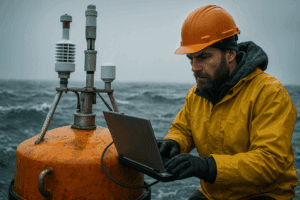Complying with emerging regulations regarding the environmental impact is one of the major challenges that the maritime industry has to face. In order to meet the new requirements, the shipping companies have already launched several initiatives. Reducing greenhouse gas emissions and energy consumption from ships and operations is on the sector’s priority list. Here are some efficient ways to improve its EEIO.
What are the most efficient ways to reduce the EEOI?
EEOI is an acronym for Energy Efficiency Operational Index. It is one of the indicators set by the International Maritime Organization (IMO) in 2009 to measure and improve energy efficiency in global shipping. It represents the amount of CO2 emitted by the ship in operation per unit (ton-mile) of transport work.
Speed reduction
It is proven that slow ship is less energy intensive than a fast one. On average, lowering speed by 10 percent allows a fuel consumption reduction of about 20 percent per distance. It is therefore the most direct way to improve the EEOI. This is the reason why slow steaming is becoming a common practice among shipping lines. However, it’s not always possible to sail at a lower speed because of time constraints due to environmental conditions, delays at ports of departure/transshipment/destination.
How to Track a Ship In Real-Time ?
Let us look at how a ships’ real-time tracker works, its details and features, its benefits for all players in the shipping sector but also its weaknesses…
Route optimization
The shorter the distance, the less a ship needs energy to operate. Optimizing route planning thus contributes significantly to the maritime industry’s carbon impact reduction. Yet determining the cost-efficient route takes more than simply finding the shortest path between the port of loading and the port of discharge. Safety for the vessels, the cargo and the crew remains crucial.
As a consequence, companies combine a huge amount of information from various sources to choose the routes that allow less fuel and energy consumption while ensuring arrival at the required time. Weather and hydrological conditions, underwater currents, congestion at ports of transshipment … are among the parameters to be taken into account.
These information shared by the ship’s captain combined with satellite data have multiple applications such as Sinay’s free ETA Calculator Module. Importers, shipping lines, port authorities… can get an accurate ETA in just a few clicks.
Technical optimization
The vessel’s energy consumption is directly linked to its size. The hydrodynamic properties are also essential for a ship’s energy efficiency. Hull and propellers are the two major components.
On new vessels, optimizing hull dimensions reduces the frictional and the wave resistance, hence the power needs to move the vessel are lower. For vessels already in operation, some innovative devices modify and boost the propulsion system.
Energy management on board

Bringing some changes in procedures and installations on board help to increase the vessel’s energy savings. These modifications can consist of:
- replacing the classical resistive lights by LED lights or halogen lamps, knowing that lighting represents 5% of a cargo ship’s total energy consumption;
- installing automatic equipment shut-off or electronically controlled systems;
- reduce energy consumption in HVAC systems where applicable;
- use energy-saving devices and solar panels or wind energy whenever possible.
Hull and propeller maintenance
Dedicated software adoption
There are now commercial software that allows an EEOI value estimation before the voyage and comparison with the real value calculated on board. This real value is based on multiple factors measured while at sea: speed, waiting time, etc. These figures emphasize the impact of real conditions of use on the ship’s energy efficiency.
Why is the EEOI improvement essential?
As the environmental awareness increases, its protection is considered as a major issue, the shipping industry is under pressure to reduce its marine, water and air pollution. The International Maritime Organization has already set a series of technical, operational and management measures in order to improve the sector’s environmental impact, mainly CO2 emissions.
Yet emissions and energy are strongly connected. Therefore, the IMO is focusing on energy efficiency, using 2 indices: the Energy Efficiency Design Index (EEDI) and the Energy Efficiency Operational Indicator (EEOI). For a better understanding the importance of how more efficient use of energy minimize CO2 emissions, let’s have a look at the concepts developed by the IMO.
How to Track a Ship In Real-Time ?
Let us look at how a ships’ real-time tracker works, its details and features, its benefits for all players in the shipping sector but also its weaknesses…
The SEEMP
The Ship Energy Efficiency Management Plan (SEEMP) is a tool designed to help ship owners and ship operators to monitor a particular vessel or a fleet’s environmental performance and increase its operational efficiency. For vessels over 400 GT, a vessel-specific SEEMP is mandatory, according to the IMO’s rules. When smartly leveraged, this measure has produced convincing results on energy efficiency by cutting the ship’s fuel consumption and operating costs. SEEMP encourages the vessel’s managers and crew to monitor its energy efficiency.
EEDI and EEOI
The Energy Efficiency Design Index (EEDI) shows how well a ship is designed from the energy efficiency point of view. It measures the amount of CO2 emitted by the ship per ton-mile. It is used during the building stage of new vessels. With the EEDI, the IMO aims at developing ships that have greener engines and equipment.
On another side, the EEOI how efficiently (energy-wise) the ship is operated. It serves as a monitoring tool of the greenhouse gases emitted when the vessel is in service. It represents the ratio between the CO2 emissions (per gram), the amount of cargo (per ton) and the distance covered (per nautical mile).
Conclusion about improving EEOI
Efforts will continue for the international maritime transport authorities and players to build and operate energy-efficient ships as new challenges arise with the growth of global trade and demand for sea transportation.
Research and development projects are ongoing, and designers have a wide field to investigate. The new technologies will play a central role in achieving the goals set: artificial intelligence, IoT, data analytics, Machine learning, geolocation etc., have a huge potential.
Last but not least, the IMO has to get involved in developing specific regulations regarding the introduction of all those changes and their impact on people, on the environment and on the global marine ecosystem stakeholders.
Frequently Asked Questions About: EEOI
Implementing a SEMP can help to optimize ship performance, reduce emissions, and prevent global problems caused by toxic pollutants released by ships. This is an important step in reducing toxic gas emissions that harm the environment.
The use of new technologies, such as advanced artificial intelligence, IoT, data analytics, machine learning, and geolocation, among others, will help to improve the EEOI as they collect and analyze large amounts of data to achieve vessel operational excellence and achieve the EEOI goals.
Both ports and vessel traffic contribute significantly to the release of toxic pollutants into the environment, such as carbon monoxide and greenhouse emissions by burning of fossil fuels to power machines on the sea and on land.


